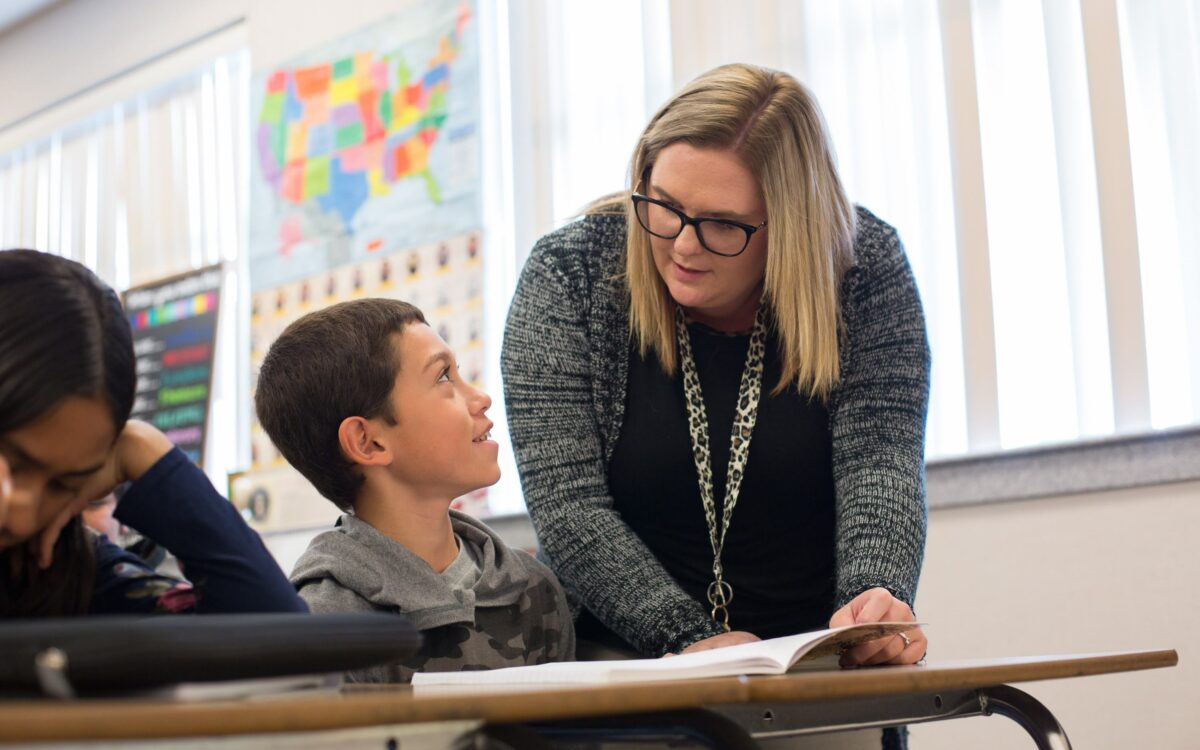California’s protracted teacher shortage isn’t over yet, but it seems to be getting better. There has been a significant increase in the number of credentialed teachers entering the workforce in recent years and a decline in the number of under-prepared teachers in classrooms.
Between the school years ending in 2017 and 2021 there was a 35% increase in the number of teachers who completed a California teacher preparation program and earned a preliminary credential, a reversal of the downward trend of the previous 10 years, according to state data.
In the 2020-21 school year, 16,554 teachers prepared in California earned preliminary credentials, according to a brief recently released by the Learning Policy Institute, a non-profit education research organization. About 3,000 others were prepared out of state.
“We are one of only a few states seeing an increase in entrants to teaching while most states are still seeing declines,” said Linda Darling-Hammond, State Board of Education president and chief executive officer of Learning Policy Institute. About 3,300 more fully prepared teachers entered teaching in 2021 than in 2019, and 2,500 fewer people were on emergency permits, she said.
Nationally, the number of people completing teacher preparation programs fell 22% between 2013 and 2019. California is one of eight states to increase the number of teachers entering the profession during that time, according to the Learning Policy Institute.

Darling-Hammond credits California initiatives to recruit and retain teachers for the increase in teaching credentials. The state has invested $1.2 billion since 2016 to address teacher shortages. Among the largest expenditures is $515 million for the Golden State Teacher Grant Program, $401 million for the Teacher Residency Grant Program, and $170 million for the California Classified School Employee Teacher Credentialing program, all which offer teacher candidates financial support, according to the Legislative Analysts Office.
The California Labor and Workforce Development Agency also recently launched a work group to develop a teacher apprenticeship program in the state.
But will these efforts be enough? The estimated need for teachers this school year was 22,143, according to the California Department of Education. Nearly 5,800 interns and 6,100 teachers on emergency permits were teaching without preliminary credentials in 2020-21, the most recent school year data is available. And, by 2025, another 15,000 credentialed teachers are expected to be needed as transitional kindergarten is expanded across the state.
State education experts are cautiously optimistic. Susan Kemper Patrick, an LPI researcher studying the teacher shortage, calls the news encouraging, but acknowledges that there are still teacher vacancies in schools that principals can’t fill.
Patrick also is optimistic about a California Commission on Teacher Credentialing survey of 60,000 people who completed teacher preparation programs in the state. Ninety percent of those surveyed between 2016 and 2020 were satisfied with their preparation. The survey also showed changes in how teachers are prepared, with 10% taking part in teacher residency programs, Patrick said.
A report by the National Center for Teacher Residencies found that 89% of graduates of teacher residency programs remain in the profession for at least three years.
California State University teacher preparation programs, which educate the majority of California students, increased enrollment by 27% between 2019 and 2021, when it had nearly 12,000 teacher candidates in its program. The University of California had 645 teacher candidates enrolled in 2022. About half of the state’s teachers are prepared at dozens of private colleges and universities.
“CSU has been an anomaly,” said Shireen Pavri, CSU assistant vice chancellor of educator and leadership programs. “Nationwide enrollment in teacher preparation is definitely down. We have been bucking the trend to a pretty large extent.”
Pavri expects enrollment figures in teacher preparation programs will continue to increase, but not at such a rapid rate. Teacher preparation programs are competing with the need for young people to get into the workforce earlier, she said.
“It’s reflective of the times we live in,” Pavri said. “Sometimes there is a need for a salary that will put them at a higher wage right out of school.”
Despite the recent growth, enrollment in CSU teacher preparation programs is still substantially below the 19,235 students enrolled 20 years ago.
CSU officials are making a concerted effort to increase the number of teacher candidates in their programs by working with partners like California Community Colleges to make it easier for students to enter teacher preparation programs, Pavri said.
University officials also are trying to get the word out about state grants for teacher candidates. Pavri is hopeful the funds will entice teacher candidates who have left teacher preparation programs to return.
“It has historically been an extremely rewarding career option, impacting families, siblings and communities,” Pavri said. “I can’t think of another career option this rewarding.”
Although some campus teacher preparation programs are full, there are enough seats across the system to accommodate all interested students, she said.
The teacher shortage has been blamed on many things including the Great Recession, when thousands of teachers were pink-slipped and lost their jobs, discouraging future generations of educators, as well as the challenges of teaching during the Covid-19 pandemic.
A recent survey of teachers by the UCLA Center for the Transformation of Schools revealed that 40% of teachers have considered leaving the profession. Most of the 4,600 teachers who took the survey say increasing pay would be the best way to improve teacher retention, followed by smaller class sizes, stronger discipline policies for students, better staffing and more manageable workloads.
It’s time to focus on teacher retention, Pavri said.
“How do we enhance salaries and working conditions and prepare the workforce, and honor the skills and science they bring to their work,” she said.
